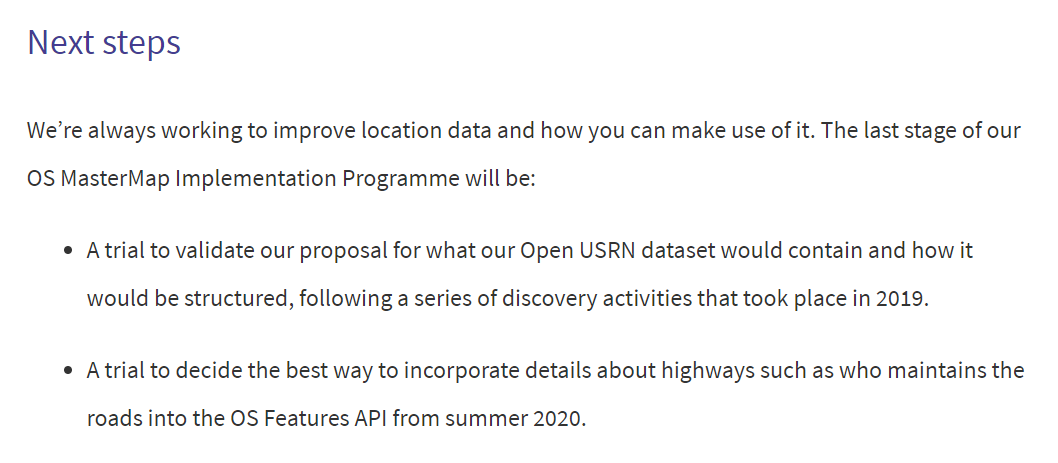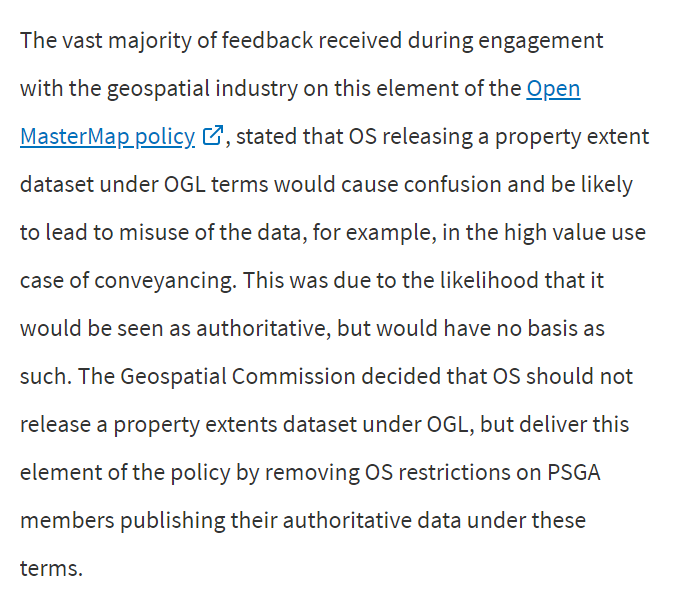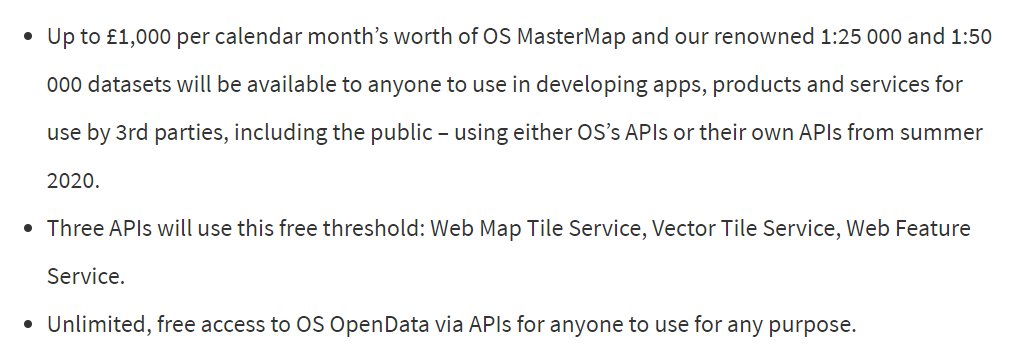● release of UPRNs/USRNs under OGL gov.uk/government/new…
● 10-year Public Sector Geospatial Agreement with OS gov.uk/government/new…
Good or bad news for #opendata and the UK's #geospatial strategy?
Let's have a look.
1/n
● @GDSteam post on UPRNs/USRNs as #openstandards technology.blog.gov.uk/2020/04/02/ide…
● @GeoPlaceLLP press release geoplace.co.uk/news-events/ne…
● @OrdnanceSurvey press release on the PSGA ordnancesurvey.co.uk/business-gover…
● OS's updated "Open MasterMap" page ordnancesurvey.co.uk/business-gover…
2/n
We don't yet have full specs either. For example OS is still validating its proposal for the Open USRN dataset.
3/n

4/n
Buried in the detail of the OS update: ordnancesurvey.co.uk/business-gover…
5/n

6/n
8/n
GDS will "mandate" use of UPRNs and USRNs as government #openstandards. technology.blog.gov.uk/2020/04/02/ide…
9/n
10/n

11/n
12/n

However the threshold may not be as generous as some were hoping, and the terms of re-use remain unclear.
13/n
Seems to be a rebadging of the PSMA and (soon) OSMA. Basically the same terms, but new products and tools in the pipeline.
14/n
But disappointing to those of us who hoped to see OS's best data re-used more flexibly, across sectors and on the open web.
15/n
Like PSMA, the PSGA represents a strategic alternative to the open agenda and operates to reduce calls for #opendata from within the public sector.
16/n
17/n



